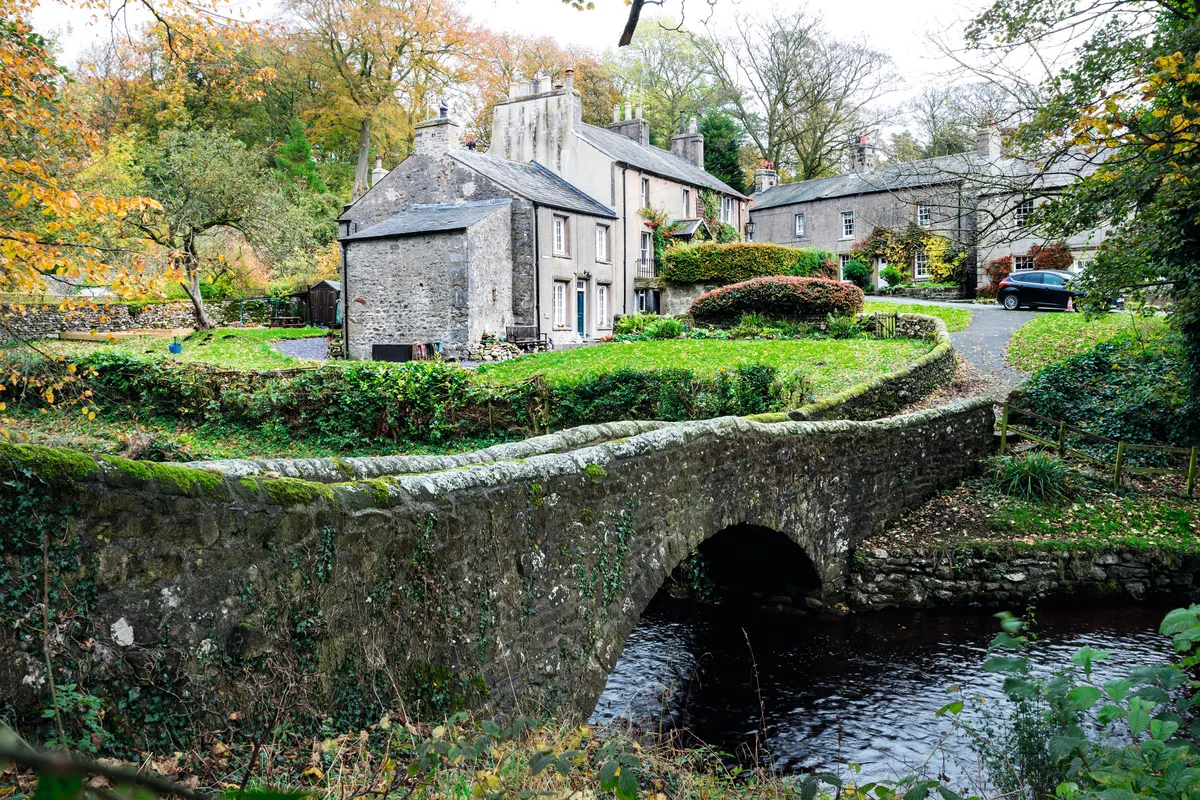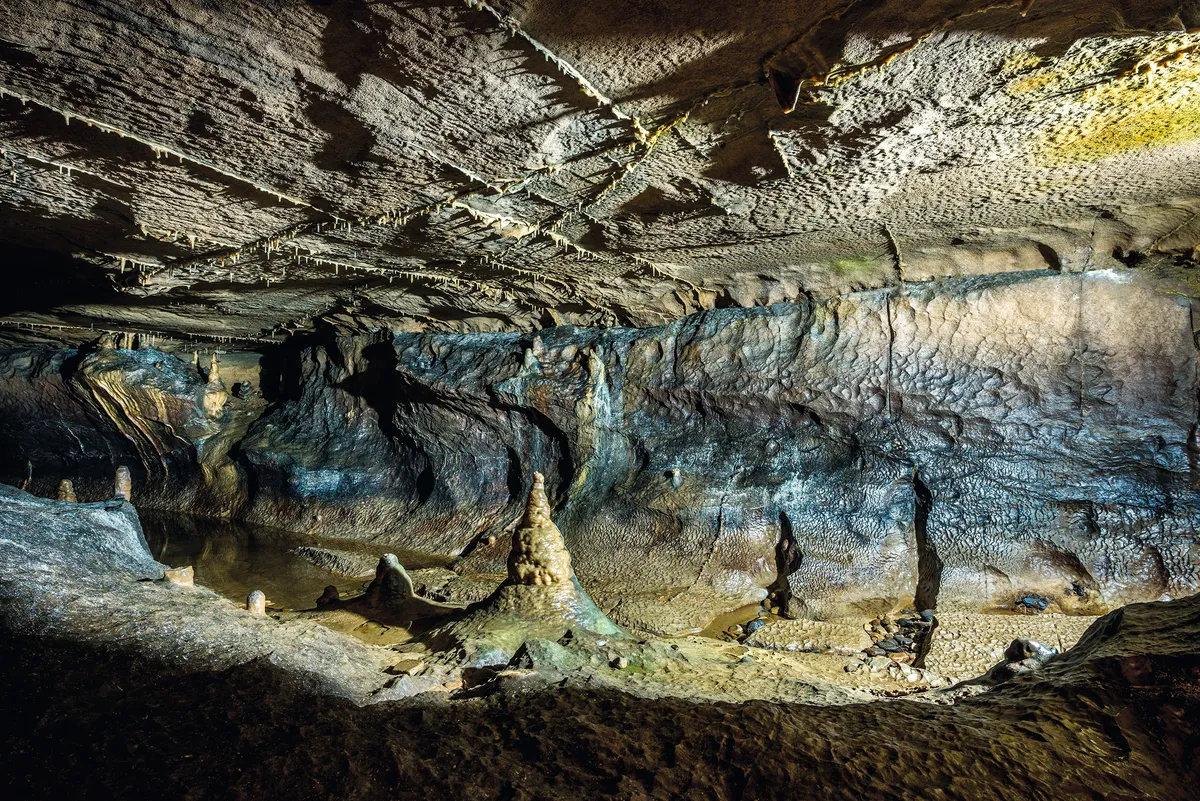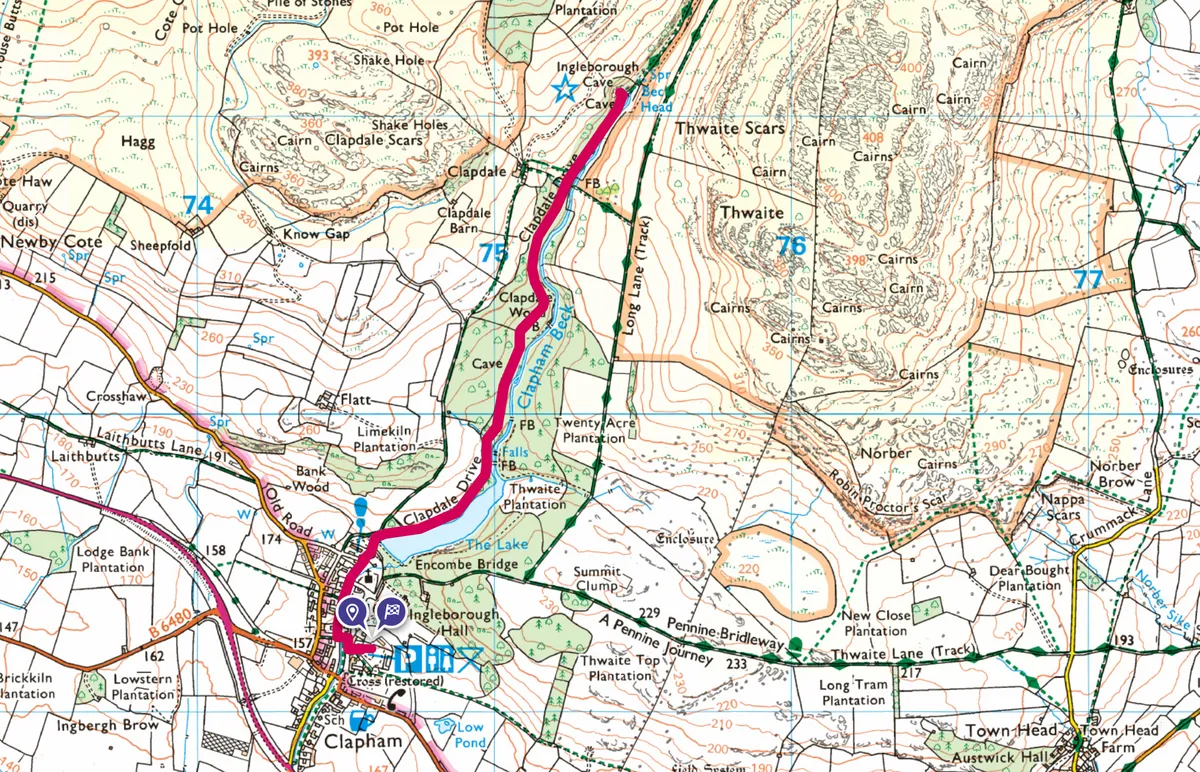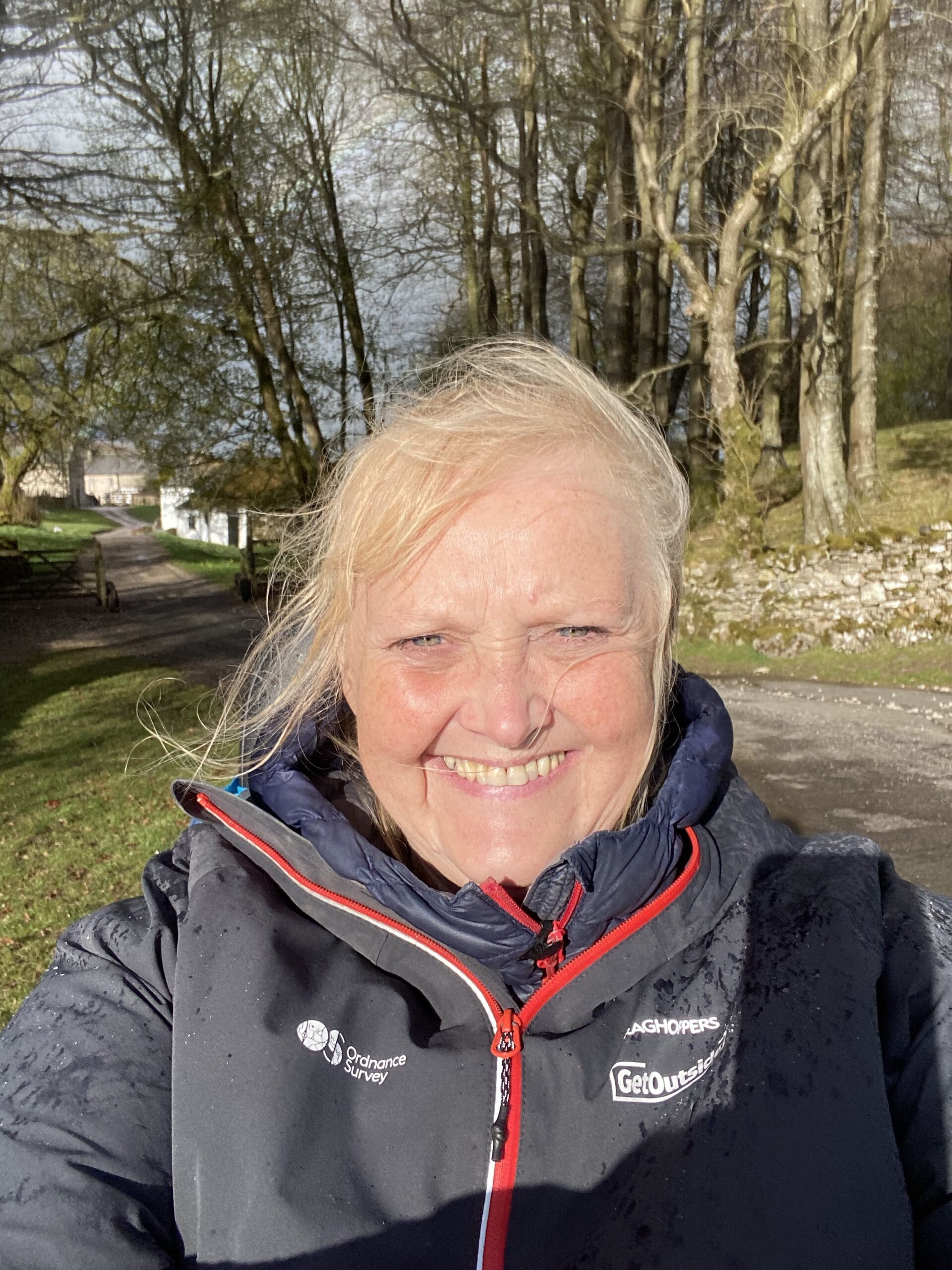Nestled below magnificent Ingleborough Peak within the Yorkshire Dales National Park – six miles north-west of Settle and just off the A65 – is the pretty village of Clapham.
Clapham was once on the main route between Kendal and Skipton but the building of the bypass now makes Clapham a very peaceful and tranquil place to visit. Clapham Beck flows through the centre of the village, which is crossed by a series of old stone bridges.
“The finest of all, a classic.” That’s how the famous author and illustrator Alfred Wainwright described this route up to Ingleborough, alongside Clapham Beck. And it is easy to see why.

The beck is a short stream of approximately 4km, which emerges at Ingleborough Cave flowing south through the village. Our walk is a linear route along the Ingleborough Nature Trail. It’s a gentle stroll from Clapham and a walk suitable for all the family. There is a small fee to enter Ingleborough Estate and an all-terrain mobility scooter is available to borrow at the entrance to the trail.
The Farrer family and Clapham Beck
As well as the dramatic limestone landscape and the abundance of wildlife to see on this walk, the area is steeped in history, much of which is told on the interpretation boards along the trail.
The Farrer family have owned Ingleborough Estate since the 18th century and this short 1.3 mile route along the nature trail is dedicated to the renowned 19th-century plant collector and writer Reginald John Farrer (1880–1920). Farrer’s childhood was spent exploring the limestone backdrop of the estate and it was this landscape, and his love of the plant life here, that influenced his future.
As a young man, Farrer travelled to the mountainous areas of Europe and the Orient in search of new Alpine species and brought back exotic plant seedlings from Tibet, China and Burma.
The story is told that Farrer loaded a shotgun with seeds collected on his foreign travels and fired them into an inaccessible rock cliff and gorge near the family home. Some say that the seeds rooted, others say not, however he did plant samples of these seedlings in several places around the Farrer property, and these plants can still be seen today.
He died at the age of 40 in Myanmar but in his short life Farrer made a significant contribution to alpine gardening, both at home and abroad, earning him the moniker, ‘the father of English rock gardening’. His lasting legacy is a collection of stunning rhododendrons that he brought back from his adventures and which were planted on the upland side above the geological faultline, the Craven Fault.
This is a truly unique day out in the Yorkshire Dales. Allow at least half an hour for this walk, which is along a slightly uneven gravel path with some uphill gradients (10° maximum). Dogs are welcome on the estate and in the cave.

Ingleborough Nature Trail walk
1.5 miles/2.4 km | 30 minutes | easy, wheelchair- and pushchair-friendly
1. By the water
The entrance to the trail is located north of the village. The uphill trail is all on a hard surface through the trees and beside the manmade lake. There is plenty of seating
along the route to rest weary legs or just to sit and soak up the beauty of this North Yorkshire landscape.
2. Tea with Bessie
Nestled among the trees is Aunt Bessie’s Grotto. Aunt Bessie was a relative of the Farrer family who commissioned the building of the grotto in the early 19th century so that she could sit inside, drink tea that was brought to her by her footmen and admire the view across Clapham Beck and the stunning Yorkshire Dales.
3. Head underground
At the end of the trail is Ingleborough Cave. The cave, first entered and made accessible to visitors in 1837, is the only underground system in the Yorkshire Dales suitable for prams and wheelchair users. Visitors with limited mobility are asked to transfer into a manual wheelchair so that they can access the underground cave system.
When exploring the cave, it’s hard to imagine that Farrer’s workers broke down the limestone dam that held back a substantial underground lake, draining the water, then went on to explore 500 metres of previously undiscovered passages with only candles to light their way. Cavers are still making new discoveries in this underground system – the remains of a woolly rhinoceros were found as recently as 2001.
4. Return to clapham
After your caving adventure, head back into the daylight and retrace your steps into Clapham, where there is a good choice of refreshments to be found in local cafés and pubs. You can find accessible toilets in the national park car park in the centre of the village.
Ingleborough Nature Trail map
Ingleborough Nature Trail walking route and map

